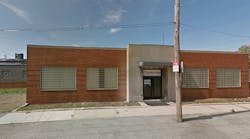The disgruntled former owner of a Cleveland, Ohio plating company allegedly committed corporate sabotage on Aug. 22, drilling holes in tanks to release toxic chemicals and in doing so, endangering employees and the neighborhood surrounding the facility. The security guard at Cleveland Plating who discovered the leaks ended up in the hospital after being exposed to the hazardous chemicals.
Benjamin Dagley of Wooster, Ohio, has been charged with breaking and entering following the Aug. 22 incident, which police and emergency services claim could have turned into a significant environmental incident for the facility and for the surrounding neighborhood. According to Cleveland Police, Dagley was captured on camera drilling into tanks of ferrous chloride, sulfuric acid, sodium cyanide, hydrochloric acid and yellow chromate and releasing the chemicals into the facility. He was inside the facility for approximately 15 minutes.
Dagley previously owned an electroplating business at the same location and still is listed as the property owner. While Dagley’s motives are unknown, information shared with the Plain Dealer by current owner Ed Cochran and court records indicate that Dagley is involved in legal disputes regarding the property and the lease with Cleveland Plating.
"He wants us to settle and we won't pay, that's why I think he's done all this," Cochran told the Plain Dealer.
The police report indicates that firefighters and hazmat specialists responded to a call from the facility, and that EPA and the U.S. Department of Homeland Security were notified of the leaks. Cochran said the company hired a hazmat company to oversee cleanup. Ohio EPA indicated that thanks to the security guard's early discovery of the leaks, all the chemicals were contained within the building and that none had escaped to the surrounding area. It might have been a different story if the company didn't have 24-hour security, said Cochran.
"If you mix the (cyanide and hydrochloric acid), you basically have the cyanide gas of World War I," Cochran told the Plain Dealer. "It certainly would produce a toxic vapor that could kill."

